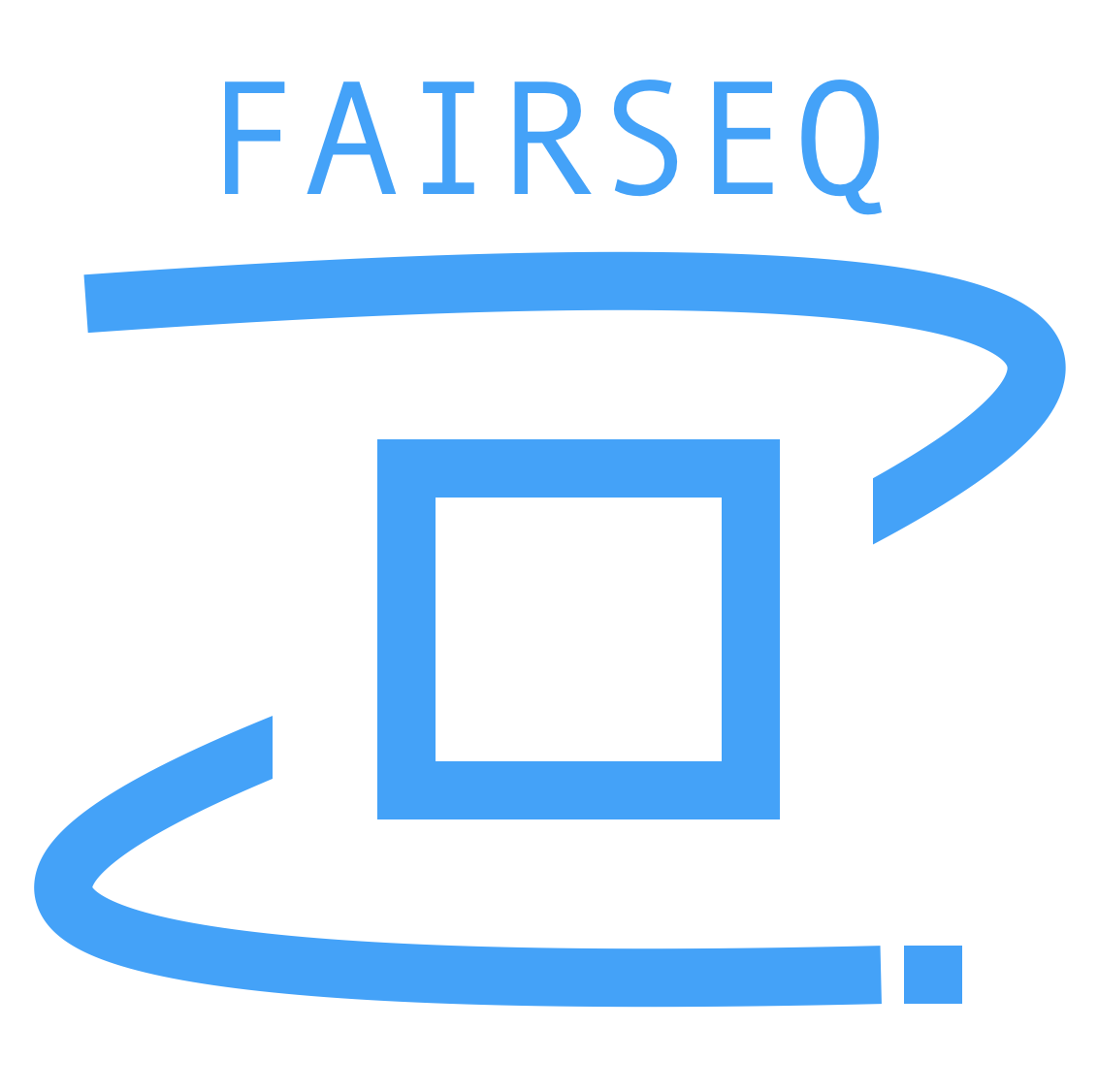An Auto-encoder for audio semantic communication, based on wav2vec at the platfrom of facebook's Fairseq. The Fairseq code is originally from https://github.com/pytorch/fairseq
中文描述
-
要新下载模型
-
需要新建数据集分割列表 manifest 文件
-
更改了 libri_label.py 数据库
-
注意安装fairseq 的版本,采用20201031的版本可以跑通
-
文件备注 -- Harlan_Thomas/wav2vec 文件用于修改代码并且调参数 -- semantic_commun 部分记录原先已经小修的代码 -- fairseq 已经git pull 代表最新 -- fairseq_20201031 10月31日版本代码
-
ASR系统参考 -- install OpenCL
Fairseq(-py) is a sequence modeling toolkit that allows researchers and developers to train custom models for translation, summarization, language modeling and other text generation tasks. We provide reference implementations of various sequence modeling papers:
- PyTorch version >= 1.4.0
- Python version >= 3.6
- For training new models, you'll also need an NVIDIA GPU and NCCL
- To install fairseq and develop locally:
git clone https://github.com/pytorch/fairseq
cd fairseq
pip install --editable ./
# on MacOS:
# CFLAGS="-stdlib=libc++" pip install --editable ./- For faster training install NVIDIA's apex library:
git clone https://github.com/NVIDIA/apex
cd apex
pip install -v --no-cache-dir --global-option="--cpp_ext" --global-option="--cuda_ext" \
--global-option="--deprecated_fused_adam" --global-option="--xentropy" \
--global-option="--fast_multihead_attn" ./- For large datasets install PyArrow:
pip install pyarrow - If you use Docker make sure to increase the shared memory size either with
--ipc=hostor--shm-sizeas command line options tonvidia-docker run.
The full documentation contains instructions for getting started, training new models and extending fairseq with new model types and tasks.
- Train a model
python train.py ./manifest/dev-other --save-dir ./w2v_thn/Rice_decoder/0623_tanh_tdiv2_feat8_6dB_Rice0_8_NR_redo --num-workers 1 --fp16 --max-update 40000 --save-interval 1 --no-epoch-checkpoints \
--arch w2vAutoEncoder --task decoder_training --lr 1e-05 --min-lr 1e-09 --optimizer adam --max-lr 0.005 --lr-scheduler cosine \
--conv-feature-layers '[(8, 1, 1), (8, 2, 1), (8, 4, 2), (1, 1, 1)]' \
--conv-aggregator-layers '[(8, 2, 1), (8, 4, 1), (8, 8, 1), (8, 16, 1)]' \
--conv-feature-layers_en '[(8, 1, 1), (8, 2, 1), (8, 4, 2)]' \
--conv-aggregator-layers_en '[(8, 2, 1), (8, 4, 1), (8, 8, 1), (8, 16, 1)]' \
--skip-connections-agg --residual-scale 0.5 --warmup-updates 500 --warmup-init-lr 1e-03 --criterion wav2vecAuto_ecoder --num-negatives 10 \
--max-sample-size 51200 --max-tokens 1000000 --skip-invalid-size-inputs-valid-test > ./decoder_log_0623_tanh_tdiv2_feat8_6dB_Rice0_8_NR_redo 2>&1 &- Train a Federated Learning model, change into "--task FL_training"
python train.py ./manifest/FL_1_dev_other --save-dir ./w2v_thn/FL_AutoEncoder/0801_tdiv1_feat8_6dB_NR_10eFL1 --num-workers 1 --fp16 --max-update 20000 --save-interval 1 --no-epoch-checkpoints \
--arch w2vAutoEncoder --task FL_training --lr 1e-05 --min-lr 1e-09 --optimizer adam --max-lr 0.005 --lr-scheduler cosine \
--conv-feature-layers '[(8, 1, 1), (8, 2, 1), (8, 4, 1), (1, 1, 1)]' \
--conv-aggregator-layers '[(8, 2, 1), (8, 4, 1), (8, 8, 1), (8, 16, 1)]' \
--conv-feature-layers_en '[(8, 1, 1), (8, 2, 1), (8, 4, 1)]' \
--conv-aggregator-layers_en '[(8, 2, 1), (8, 4, 1), (8, 8, 1), (8, 16, 1)]' \
--skip-connections-agg --residual-scale 0.5 --warmup-updates 500 --warmup-init-lr 1e-03 --criterion wav2vecAuto_ecoder_FL --num-negatives 10 \
--max-sample-size 51200 --max-tokens 1000000 --skip-invalid-size-inputs-valid-test > ./FL_log_0801_tdiv1_feat8_6dB_NR_10eFL1_2 2>&1 &
python train.py ./manifest/FL_2_dev_clean --save-dir ./w2v_thn/FL_AutoEncoder/0801_tdiv1_feat8_6dB_NR_10eFL2 --num-workers 1 --fp16 --max-update 20000 --save-interval 1 --no-epoch-checkpoints \
--arch w2vAutoEncoder --task FL_training --lr 1e-05 --min-lr 1e-09 --optimizer adam --max-lr 0.005 --lr-scheduler cosine \
--conv-feature-layers '[(8, 1, 1), (8, 2, 1), (8, 4, 1), (1, 1, 1)]' \
--conv-aggregator-layers '[(8, 2, 1), (8, 4, 1), (8, 8, 1), (8, 16, 1)]' \
--conv-feature-layers_en '[(8, 1, 1), (8, 2, 1), (8, 4, 1)]' \
--conv-aggregator-layers_en '[(8, 2, 1), (8, 4, 1), (8, 8, 1), (8, 16, 1)]' \
--skip-connections-agg --residual-scale 0.5 --warmup-updates 500 --warmup-init-lr 1e-03 --criterion wav2vecAuto_ecoder_FL --num-negatives 10 \
--max-sample-size 51200 --max-tokens 1000000 --skip-invalid-size-inputs-valid-test > ./FL_log_0801_tdiv1_feat8_6dB_NR_10eFL2_2 2>&1 &- Inference the model: see "xxx_inference.ipynb"
- Twitter: https://twitter.com/fairseq
- Facebook page: https://www.facebook.com/groups/fairseq.users
- Google group: https://groups.google.com/forum/#!forum/fairseq-users
fairseq(-py) is MIT-licensed. The license applies to the pre-trained models as well.
Please cite as:
@inproceedings{ott2019fairseq,
title = {fairseq: A Fast, Extensible Toolkit for Sequence Modeling},
author = {Myle Ott and Sergey Edunov and Alexei Baevski and Angela Fan and Sam Gross and Nathan Ng and David Grangier and Michael Auli},
booktitle = {Proceedings of NAACL-HLT 2019: Demonstrations},
year = {2019},
}